CCCEU Weekly Update 09 Feb 2024 | New Perspective: The Vital Role of the Chinese Market in the Growth of EU Businesses
Editor's Note: As the vibrant tapestry of the celestial calendar prepares to turn another page, marking the advent of the Year of the Dragon, the CCCEU, with heartfelt anticipation, extends its most sincere and auspicious wishes to you on the eve of Chinese New Year. Enjoy your read and have a nice holiday.
Focus
China and Europe have established an resilient and dynamic economic and trade relationship. This relationship is not only a witness to the deep cooperation between the two sides in the fields of economy, trade, and investment, but it also reflects that, as two major forces driving world multipolarization, geographical boundaries are unable to limit the expansion of economic activities between China and Europe. This week, the European Statistics (Eurostat) released historical data on the operation of EU overseas branches, providing us with a novel perspective.
The data shows that in 2020, the majority of sales (58.4%) of EU overseas branches came from outside the EU (non-EU member states). As shown in Figure 1, branches in Ireland (76.0%), Spain (72.9%), and Cyprus (69.9%) had the highest proportion of total turnover generated outside the EU. In contrast, subsidiaries in the Czech Republic, Slovakia, Lithuania, Malta, Hungary, and Romania had more than three-quarters of their turnover coming from other EU member states.
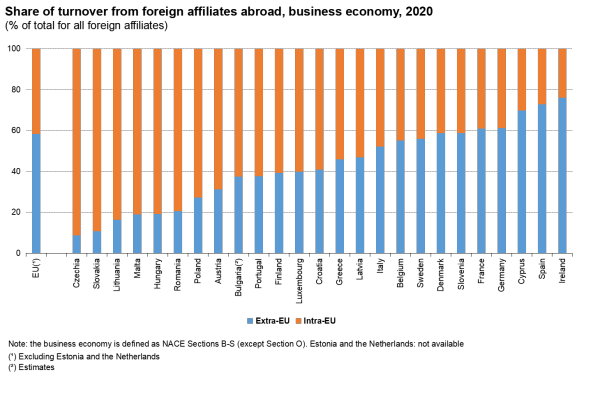
Figure 1: Share of turnover from foreign affiliates abroad, business economy in 2020
At the same time, nearly two-thirds (62.1%) of employees hired by EU companies overseas work outside the EU. As shown in Figure 2, in 2020, in 14 of these 25 EU member states (excluding Estonia and the Netherlands), the majority of the labor force of overseas branches worked outside the EU, with the highest proportions in branches from Ireland (80.5%), Spain (77.3%), Cyprus (76.3%), Slovenia (68.0%), and France (66.3%). In other EU member states, at least one-seventh of the labor force of their overseas branches were employed in non-EU member states.
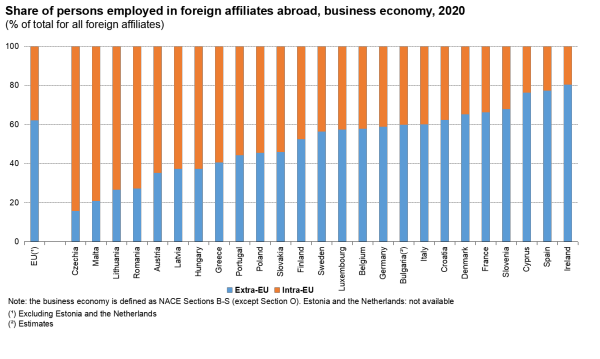
Figure 2: Share of persons employed in foreign affiliates abroad, business economy in 2020
Manufacturing and distribution trade are the two most important economic activities for EU overseas branches. In 2020, in terms of sales and job creation in these two fields, China has become one of the most important partners of EU overseas branches, second only to the United States.
As shown in Figure 3, the top five partner countries in sales for EU overseas branches in manufacturing and distribution trade are: the United States, China, Switzerland, Singapore, and Brazil.
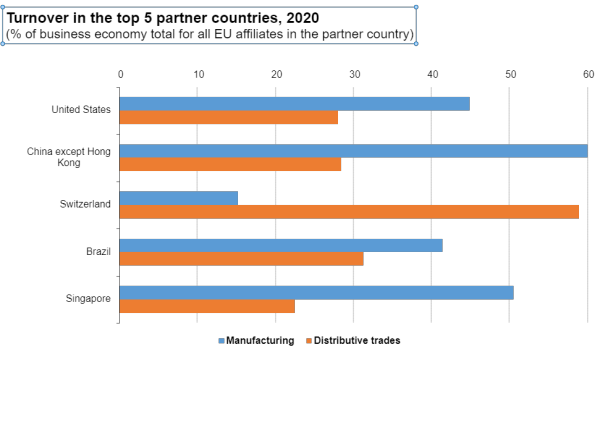
Figure 3: Turnover in the top 5 partner countries in 2020
As shown in Figure 4, the top five partner countries in employment numbers for EU overseas branches in manufacturing and distribution trade are: the United States, China, India, Brazil, and Mexico.
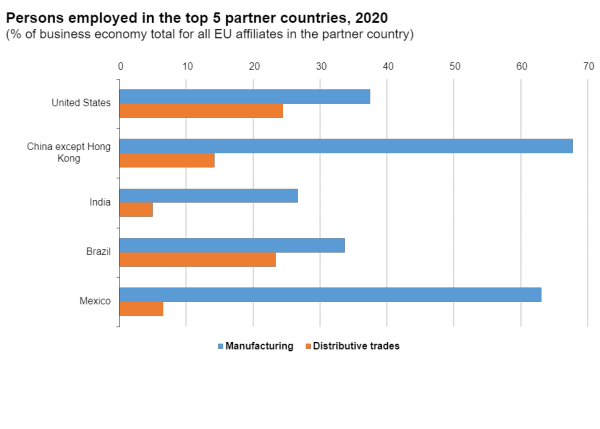
Figure 4: Persons employed in the top 5 partner countries, 2020
Looking at the operation of EU overseas branches in China, as shown in Figure 5, from 2013 to 2020, sales showed a yearly increasing trend, and the number of employees kept increasing from 2013 to 2017, but then saw a decline.

Figure 5: Sales and employment share of EU overseas branches in China (excluding Hong Kong) from 2013 to 2020
Nowadays, strengthening the development and cooperation between the two major markets of China and Europe has strategic significance for jointly addressing global challenges and promoting world peace and prosperity. In summary, the importance of the Chinese market to EU businesses and their economies and employment is self-evident.
1. Huge market potential. China has one of the world's largest consumer markets, and its vast consumer group and growing consumption capacity offer enormous market potential for EU businesses. By selling goods and services to this market, EU enterprises can significantly increase their global sales, thus promoting business growth and profitability.
2. The strategic position in the supply chain. Many EU businesses rely on China's manufacturing capabilities and supply chain network to reduce production costs and improve product competitiveness. Furthermore, with China's investment and development in high-tech fields, more and more EU businesses have established technological cooperation with Chinese enterprises to jointly develop new products and technologies. This not only optimizes the supply chain of EU enterprises but also promotes technological innovation and knowledge transfer.
3. Investment and economic cooperation. China is an important trade partner and investment destination for the EU. Direct investment by EU enterprises in China not only promotes the development of bilateral trade relations but also helps EU businesses access new business opportunities and market shares. This economic cooperation promotes the international flow of technology, capital, and talent, enhancing the vitality and innovative capacity of the EU economy.
4. Job creation and skill development. The expansion of EU business in China not only creates a large number of local employment opportunities but also promotes the exchange of skills and knowledge. This enhancement of skills and knowledge is important for improving production efficiency and promoting innovation. At the same time, the successful experience and business models of EU enterprises in China can also feed back to EU countries, providing new ideas and opportunities for employment and vocational training in the EU.
Hot Topics
EU ski and snowboard production up by 37% in 2022 China was largest source for non-EU imports
In 2022, EU countries produced 4.8 million pairs of skis and snowboards, an increase of 37% when compared with 2021. Almost half of these items (2.2 million; 45%) were produced in Austria, according to Eurostat.
Across the EU member states, Austria was the largest exporter and importer with 1.2 million pairs of skis and snowboards exported while importing 0.7 million items. The second and third largest exporters were France (0.4 million) and Italy (0.3 million). The second and third largest importers were Germany and France (both 0.3 million).
With regard to exports to non-EU countries, around two-fifths of EU pairs of skis and snowboards went to the United States (1.1 million, or 42% of total extra-EU exports of skis and snowboards), followed by Canada (0.4 million, 16%) and China (0.3 million, 13%). Imports from non-EU countries originated mainly from China (0.6 million; 34%), Ukraine (0.6 million; 31%) and Japan (0.2 million; 13%).
EU rebuffs European solar industry's plea for emergency help to fight China imports
South China Morning Post reported that Brussels has rebuffed the European solar industry's request for emergency measures to combat a surge in cheap imports from China.
Any use of trade weapons must be "weighed against" the EU's lofty climate goals, a senior commission official said on Monday, days after an industry group warned solar-panel manufacturers would go bankrupt without urgent support.
EU delays corporate transparency rules for mining, oil and gas firms
Euractiv reported that the European Parliament and the Council of EU member states agreed on Wednesday evening (7 February) to grant a two-year delay for sector-specific standards under the Corporate Sustainability Reporting Directive (CSRD), offering a break to mining and fossil fuel firms targeted by the upcoming transparency rules.
The deal reached on Wednesday will give companies more time to prepare for the sectorial reporting rules, the Council said in a statement.
Those will be adopted in June 2026, two years later than originally planned, it added.
Mexico overtakes China as the leading source of goods imported to U.S.
For the first time in more than two decades, Mexico last year surpassed China as the leading source of goods imported to the United States, AP reported.
Figures released Wednesday by the U.S. Commerce Department show that the value of goods imported to the United States from Mexico rose nearly 5 percent from 2022 to 2023, to more than $475 billion. At the same time, the value of Chinese imports imports tumbled 20 percent to $427 billion.
The last time that Mexican goods imported to the United States exceeded the value of China's imports was in 2002.
What are experts talking about?
China's economic prospects are brighter than they appear
Auther: Yu Yongding, Director of the Institute of World Economics and Politics at the Chinese Academy of Social Sciences
Source: Project Syndicate
The start of 2024 has been marked by a wave of increasingly pessimistic forecasts for China's economy. While the Chinese government remains optimistic, the International Monetary Fund projects that GDP growth will slow to 4.6% this year, from 5.4% in 2023. Meanwhile, the Chinese stock-market rout is expected to continue after share prices fell to their lowest level in five years. But China's economic prospects are brighter than they appear. While the government has yet to publish its own outlook for 2024, most Chinese economists expect it to set an annual growth target of 5%. Given China's better-thanexpected economic performance in 2023, I believe that 5% growth is both necessary and feasible.
The evolving dynamics of research and innovation engagement between the EU and China
Auther: Maria Cristina Russo, Director for Global Approach & International Cooperation in R&I at the European Commission Directorate-General for Research and Innovation (DG RTD)
Source: Friends of Europe
The past two decades have seen the European Union and China shape their relations in a number of strategic areas from trade to climate change. The leaders of both sides reiterated their commitment to engagement at the latest EU-China Summit that took place on 7 December 2023. Yet only recently has an area historically less visible from a geopolitical point of view strongly come back to the fore, namely research and innovation (R&I). This is a vast policy area that covers cooperation between the EU and China in matters of science, technology and innovation. It is an area of shared competence between the EU and its member states.
R&I prowess will define our ability to remain competitive and ensure our security going forward, but ultimately whether the EU will be successful in re-modulating its engagement with China in a truly mutually beneficial way will also depend on the willingness of its member states and its stakeholders to develop and sustain coordinated positions.
Please note: the English version of this issue is slightly different from our Chinese one. The views and opinions expressed in this article do not necessarily reflect the official position of the CCCEU.

 Login
Login Login
Login CCCEU and Gunnercooke Successfully Host Webinar on CSDDD and FLR Compliance to Guide Chinese Businesses
CCCEU and Gunnercooke Successfully Host Webinar on CSDDD and FLR Compliance to Guide Chinese Businesses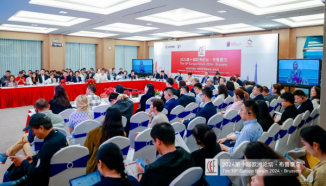 Cultivating responsible China-EU business leaders essential to tackling global challenges
Cultivating responsible China-EU business leaders essential to tackling global challenges



